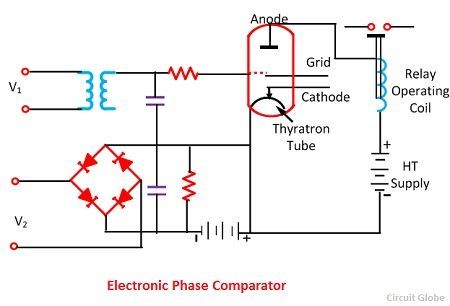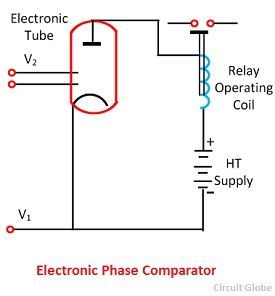Definition: The electronic relay is a type of an electronic switch that opens or close the circuit contacts by using electronic component without any mechanical operation. In this relay, the current carrier pilot relaying scheme is used for the protection of the transmission line.
In such type of relay, the electronic valves are used as a measuring unit. The two basic arrangements of electronic relays are shown below. One uses an amplitude comparator, and the other makes use of a phase comparator.
The figure of the amplitude comparator electronic relay is shown in the figure below. The relay has two input ac quantities which are compared and rectified by the help of rectifier bridge circuit. The ac quantity is applied to the control grid of the bridge circuit. The relay placed in series with the bridge circuit start operating when any one of the input quantities exceeds to the other.
 In electronic phase comparator relay one of the ac quantity is given to the control grid of the electronic tube, and the other is directly connected to the screen of the tube. The relay starts operating when both the ac quantities are in phase with each other.
In electronic phase comparator relay one of the ac quantity is given to the control grid of the electronic tube, and the other is directly connected to the screen of the tube. The relay starts operating when both the ac quantities are in phase with each other.
Advantages of Electronic Relay
The electronic relay has several advantages likes
- They require low maintenance.
- The relay has fast response time.
- They decrease the burden on the instrument transformer.
Disadvantages of Electronic Relay
- The high tension supply is required for their operation.
- The power consumption in the electronic relay is very high.
- The relay has the short lifespan.
The electronic relay is practically not used in the power system

